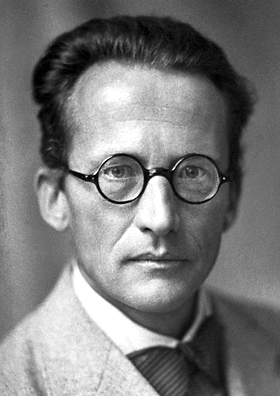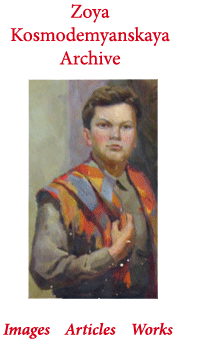I recently came upon an inexpensive copy of The World of Mathematics, Volume 2, and while I usually try to avoid purchasing single volumes of multi-volume works (that is, I prefer to buy entire sets at a time), I couldn’t pass up this book because the diversity of subject matter and authors looked intriguing. Included in the volume are works by Gallileo, Mendel and Mendeleev, as well as many others.
I was particularly interested in reading an article called “Heredity and Quantum Theory,” which I initially thought was authored by Werner Heisenberg. In fact, believing the piece to be by Heisenberg , I had hoped that there would be some kind of argument offered through the work that would suggest that genetic mutation occurs at a subatomic level due to the same underlying principles expressed in the uncertainly principle. At some point, I realized I had become confused when selecting the work in the book’s table of contents (Heisenberg did contribute a piece to this volume), and that “Heredity and Quantum Theory” was actually authored by Erwin Schrödinger (of “Schrödinger’s cat” fame). However, the fact that I was mistaken regarding the author of the piece didn’t really detract from the quality of information, therein. In fact, there is a close relationship between the hypothetical story of Schrödinger’s cat and Heisenberg’s uncertainty principle in that both hold that the presence of an observer influences the outcome of an experiment or phenomenon. Kind of. 1
In “Heredity and Quantum Theory,” Schrödinger elucidates a plausible relationship between quantum mechanics and genetic mutation. Although the details are sometimes difficult to comprehend, the fundamental premises of the work and Schrödinger’s conclusions make for some fascinating material. The work is referenced through Google Books, but there doesn’t seem to be much of it online, presented below are some of the salient points of this essay:
THUS, aided by the marvellously subtle instrument of X-rays (which, as the physicist remembers, revealed thirty years ago the detailed atomic lattice structures of crystals), the united efforts of biologists and physicists have of late succeeded in reducing the upper limit for the size of the microscopic structure, being responsible for a definite large-scale feature of the individual —the ‘size of a gene’ —and reducing it far below the estimates referred to earlier.2 We are now seriously faced with the question: How can we, from the point of view of statistical physics, reconcile the facts that the gene structure seems to involve only a comparatively small number of atoms (of the order of 1000 and possibly much less), and that nevertheless it displays a most regular and lawful activity —with a durability or permanence that borders upon the miraculous.
He continues:
In this case it is supplied by quantum theory. In the light of present knowledge, the mechanism of heredity is closely related to, nay, founded on, the very basis of quantum theory. This theory was discovered by Max Planck in 1900. Modern genetics can be dated from the rediscovery of Mendel’s paper by de Vries, Correns and Tschermak (1900) and from de Vries’s paper on mutations (1901-3). Thus the births of the two great theories nearly coincide, and it is small wonder that both of them had to reach a certain maturity before the connection could emerge. On the side of quantum theory it took more than a quarter of a century till in 1926-7 the quantum theory of the chemical bond was outlined in its general principles by W. Heitler and F. London. The Heitler-London theory involves the most subtle and intricate conceptions of the latest development of quantum theory (called ‘quantum mechanics’ or ‘wave mechanics’). A presentation without the use of calculus is well-nigh impossible or would at least require another little volume like this. But fortunately, now that all work has been done and has served to clarify our thinking, it seems to he possible to point out in a more direct manner the connection between quantum jumps’ and mutations, to pick out at the moment the most conspicuous item. That is what we attempt here.
Further, while the following section is not the conclusion of the piece itself, this portion represents some of the most important of Schrödinger’s assertions on the matters of genetics and quantum theory:
Granted that we have to account for the rare natural mutations by chance fluctuations of the heat motion, we must not be very much astonished that Nature has succeeded in making such a subtle choice of threshold values, as is necessary to make mutation rare. For we have, earlier in these lectures, arrived at the conclusion that frequent mutations are detrimental to evolution. Individuals which, by mutation, acquire a gene configuration of insufficient stability, will have little chance of seeing their ‘ultra-radical,’ rapidly mutating descendancy survive long. The species will be freed of them and will thus collect stable genes by natural selection. [My emphasis. -M.]
The essay concludes with Schrödinger’s discussion of thermodynamic entropy as a measurable physical quantity (which can be expressed through statistical physics) and, more importantly, what entropy (e.g. disorder) means to evolution and life itself. Yakhot’s subsequent assertion “What is of decisive importance in nature is not rest, although it does exist, but movement, development (and) change” is a succinct yet broad validation of Schrödinger’s assertions in this regard. 3
Full text:
Schrödinger , Erwin. “Heredity and Quantum Theory.” The World of Mathematics, Volume 2. New York: Simon and Schuster, 1956. 975-1000.
Note: The above excerpts are presented in accordance with the doctrine of Fair Use.
[1] The Uncertainty Principle (commonly expressed as ΔXΔP≥ℏ/2) is succinctly explained by Douglas Hofstadter in his July 1981 essay “Heisenberg’s Uncertainty Principle and the Many Worlds Interpretation of Quantum Mechanics” thusly:
“The uncertainty principle states not that the observer always interferes with the observed, but rather that at a very fine grain size, the wave-particle duality of the measuring tools becomes relevant.” [My emphasis. -M.]
He also discusses the implications of the “Schrödinger’s cat” thought experiment in some detail, summarized briefly as such:
The plight of “Schrödinger’s cat”…suggests that (the subject) might be in a quantum-mechanical superposition of states until a human observer intervened. [My emphasis. -M.]
The full text of Hofstadter’s article is included in the compilation Metamagical Themas: Questing for the Essence of Mind and Pattern, pp. 455-477.
[2] …Earlier in the volume from which this excerpt has been taken, Schrodinger gives the estimates of maximum size of the gene (evidence obtained by breeding experiments and microscopic inspection): the maximum volume is equal to a cube of side 300 A. (“A” is the abbreviation of Angstrom which is the 1010th part of a meter, or in decimal notation 0.0000000001 meter.) – From the original text.
[3] From O. Yakhot’s “What is Matter and in What Forms Does it Exist?”









